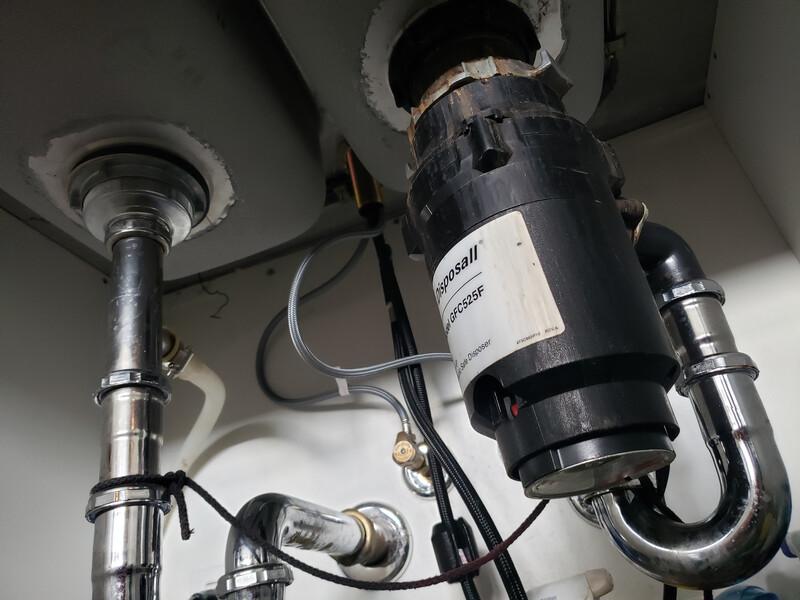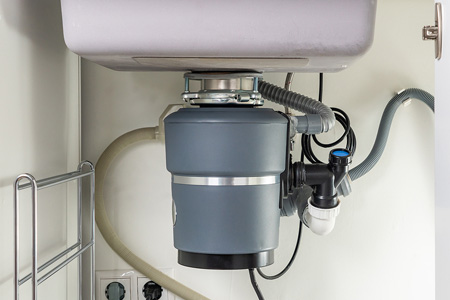An Comprehensive Guide to Fixing a Leaky Garbage Disposal
An Comprehensive Guide to Fixing a Leaky Garbage Disposal
Blog Article
This great article in the next paragraphs involving Garbage Disposal Leaking From Bottom is highly compelling. Give it a go and draw your own results.

Waste disposal unit are necessary cooking area appliances that aid in disposing of food waste efficiently. However, a dripping waste disposal unit can be a frustrating and unpleasant trouble to manage. Fortunately, lots of leaks can be repaired quickly with a couple of easy steps. In this write-up, we will certainly go over just how to deal with a leaking garbage disposal successfully.
Introduction
Garbage disposals are installed under kitchen sinks and are created to shred food waste into smaller sized items, allowing it to go through the pipes system conveniently. While these devices are normally reputable, leakages can happen in time due to wear and tear, loose links, or damages to the system.
Step-by-Step Overview to Fixing a Dripping Waste Disposal Unit
Shut off the Power
Before trying any type of repairs, make certain that the power to the garbage disposal device is shut off to avoid the threat of electrical shock.
Situate the Leak
Identify the specific area of the leakage and determine the cause
Tighten Links
Use a wrench to tighten up any loose links in between the disposal device and the pipes system.
Change Seals or Gaskets
If the leakage is because of used seals or gaskets, remove the old parts and change them with new ones.
Patching Fractures or Holes
For splits or holes in the disposal system, use epoxy or an appropriate patching product to secure the damaged area.
Identifying the Source of the Leakage
Before trying to repair a leaking garbage disposal, it is essential to determine the source of the leak. This can usually be done through visual inspection or by conducting straightforward examinations.
Visual Evaluation
Evaluate the garbage disposal unit thoroughly for any signs of water leak. Pay very close attention to locations around seals, gaskets, and link factors.
Evaluating for Leaks
One method to evaluate for leaks is by running water via the disposal device and checking for any noticeable indicators of leak.
Usual Sources Of Leakages in Waste Disposals
Worn Seals and Gaskets
Seals and gaskets play an essential role in avoiding water from dripping out of the waste disposal unit. Gradually, these components can wear away, leading to leaks around the disposal unit.
Loose Links
The connections between the waste disposal unit and the pipes system can end up being loose gradually, creating water to leakage out throughout procedure.
Cracks or Openings in the Disposal Device
Physical damages to the waste disposal unit, such as cracks or openings in the real estate, can also cause leakages.
Devices and Materials Needed for Repairing a Leaking Garbage Disposal
Before starting the fixing procedure, gather the required tools and materials, consisting of a screwdriver, adjustable wrench, plumbing professional's putty, substitute seals or gaskets, and epoxy or patching material for fixing splits or openings.
Evaluating the Garbage Disposal After Repair
Once the repair work is full, evaluate the garbage disposal by running water through it to ensure that the leakage has actually been fixed.
Preventive Upkeep Tips to Stay Clear Of Future Leakages
To avoid future leaks, it is essential to carry out routine upkeep on your garbage disposal. This consists of maintaining it tidy, preventing putting non-food items or difficult things down the disposal, and periodically checking for leakages or various other issues.
Final thought
In conclusion, repairing a leaking garbage disposal is a fairly straightforward process that can be finished with basic devices and materials. By following the actions outlined in this short article and practicing precautionary upkeep, you can maintain your garbage disposal in good working condition and avoid pricey fixings in the future.
What to Do About a Leaking Garbage Disposal
A leaking garbage disposal often goes unnoticed until you confront a sopping cabinet, a foul-smelling puddle, or an audible drip-drip-drip from the unit. The fix can be frustrating, too, because the leak can stem from a number of components in the system. Fortunately, with a little sleuthing, you can zero in on the leak and—depending on the exact location—stop the icky oozing and repair the component that caused it. Worst case scenario, if it turns out that the garbage disposal must be replaced, installing a new one is a reasonable do-it-yourself task for those with basic plumbing skills. Read on to keep the cash you’d otherwise hand over to a pro.
Prepare to find the leak
Prior to testing the garbage disposal for leaks, unplug it at the wall outlet and turn off the power from the breaker box to prevent electrical shock. Then insert a watertight sink stopper into your sink drain and wipe the unit dry with a clean cloth. In any handy container, mix a few drops of food coloring into a few cups of water, and pour the dyed water onto the sink stopper to help you locate the leak.
Investigate the source
the top, where the disposal meets the sink drain the side, where the dishwasher hose or main drain pipe connects to the disposal or the bottom of the unit Inspect each of these locations while gliding a light-colored rag over the unit; the dyed water will readily show on the rag and reveal the location of the leak. If a leak isn’t immediately apparent, remove the sink stopper and pour a few more cups of dyed water down the sink drain, then check for leaks again. Leaks near the top of the unit are more likely to show themselves while the sink is plugged, while side and bottom leaks are more noticeable while the sink is unplugged.
The metal sink flange that sits directly inside the sink drain is typically sealed around the top with plumber’s putty (a clay-like sealant) and then secured from under the sink with bolts. If the plumber’s putty deteriorates, or the bolts loosen, the flange can no longer form a watertight seal between the sink drain and the disposal—which could cause a leak at the top of the unit.
To reseal the leaky flange, you must first detach the garbage disposal. Start by loosening the screws securing the main drain pipe to the disposal, then loosen the screws in the metal clamp securing the dishwasher hose to the disposal and detach the drain pipe and dishwasher hose from the disposal. Loosen the screws in the mounting ring that connects the disposal to the metal mounting assembly beneath the sink, then pull down the disposal and carefully set it on a clean, dry surface. Loosen the bolts in the mounting assembly with a wrench, then pull down the mounting assembly and set it near the disposal.

Do you appreciate reading up on Why Is ? Give a remark directly below. We would be glad to know your thinking about this blog post. Hoping that you visit us again in the future. Appreciated our article? Please share it. Let other people find it. Thanks for your time spent reading it.
Click Here Report this page